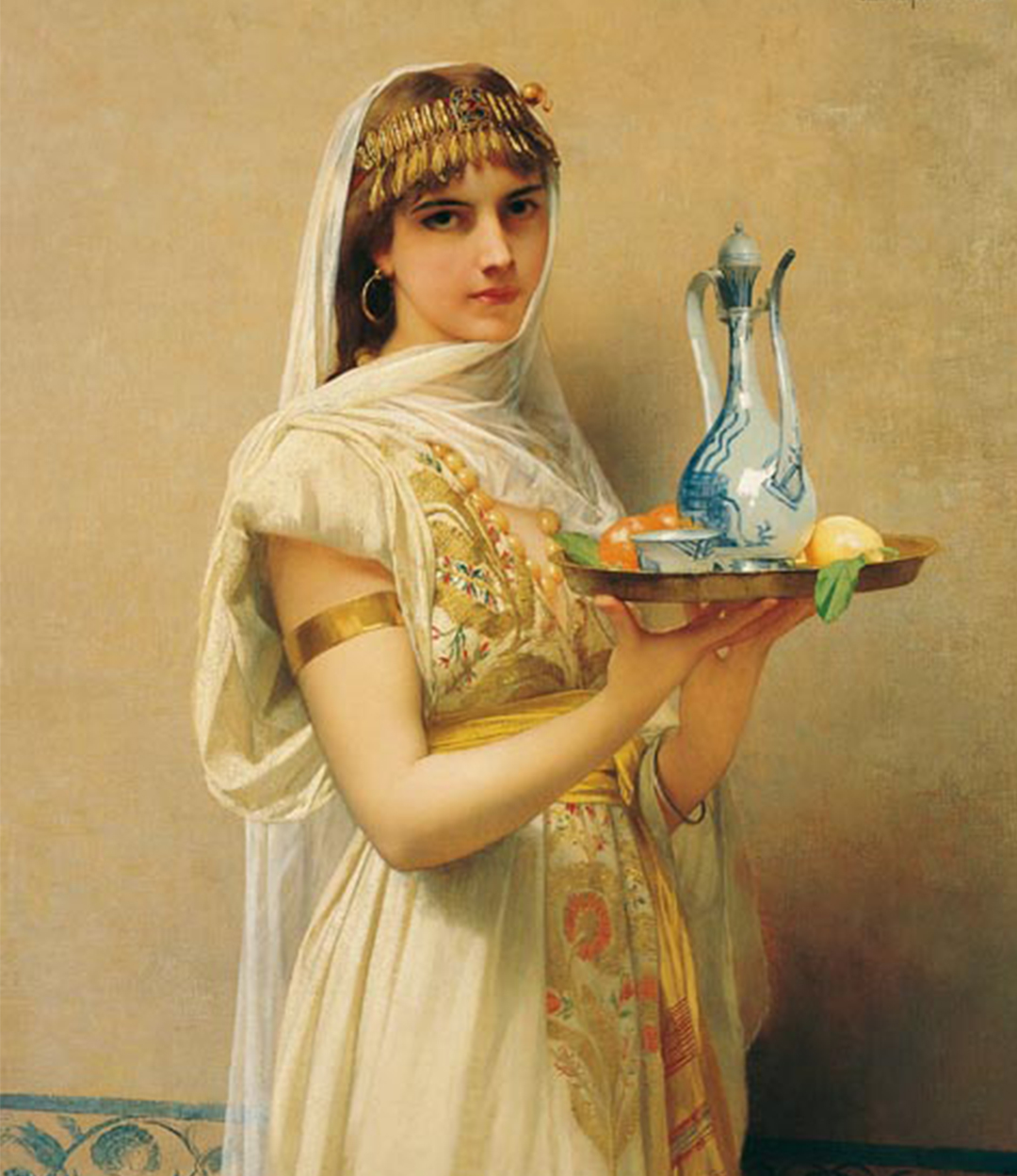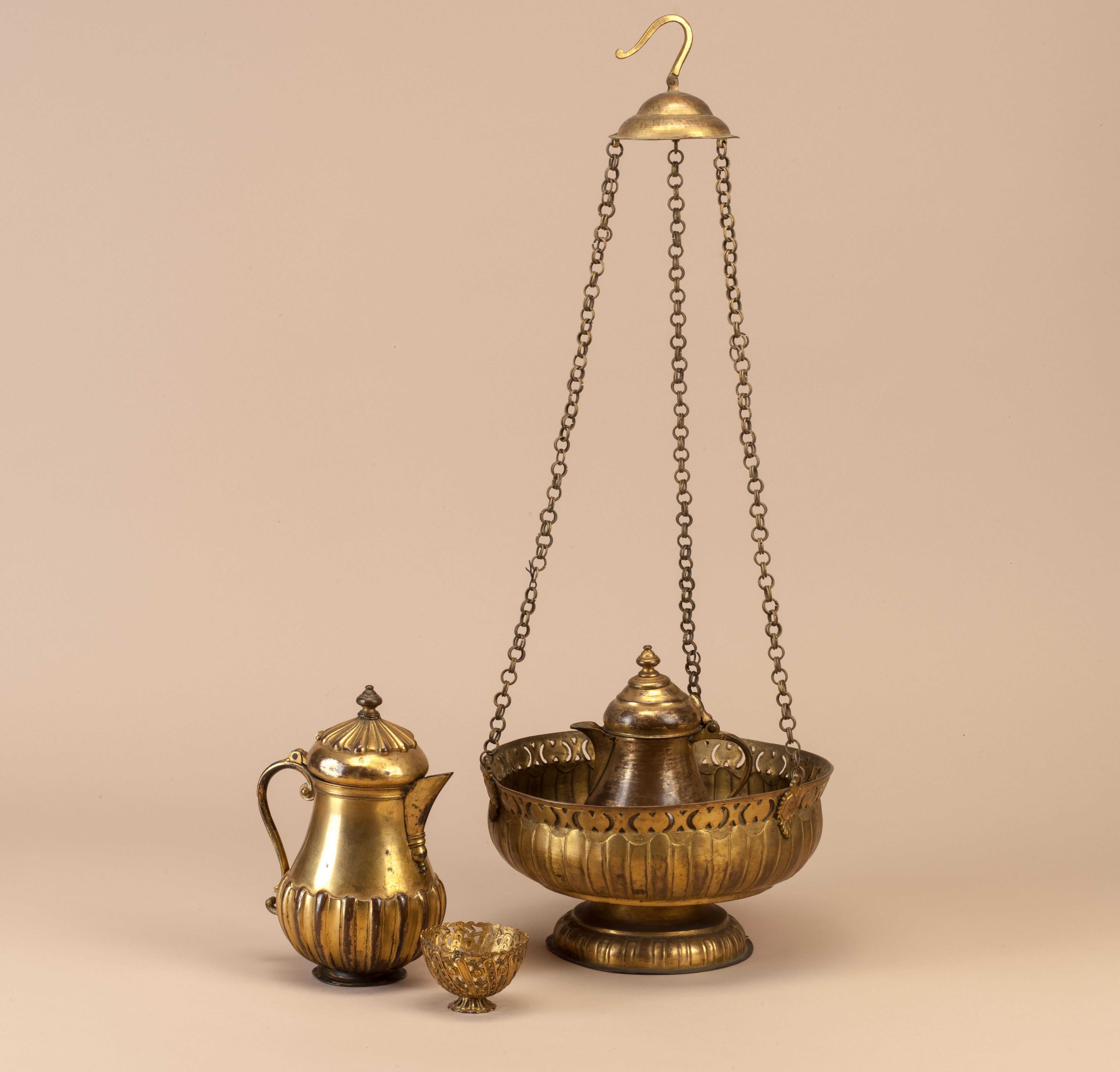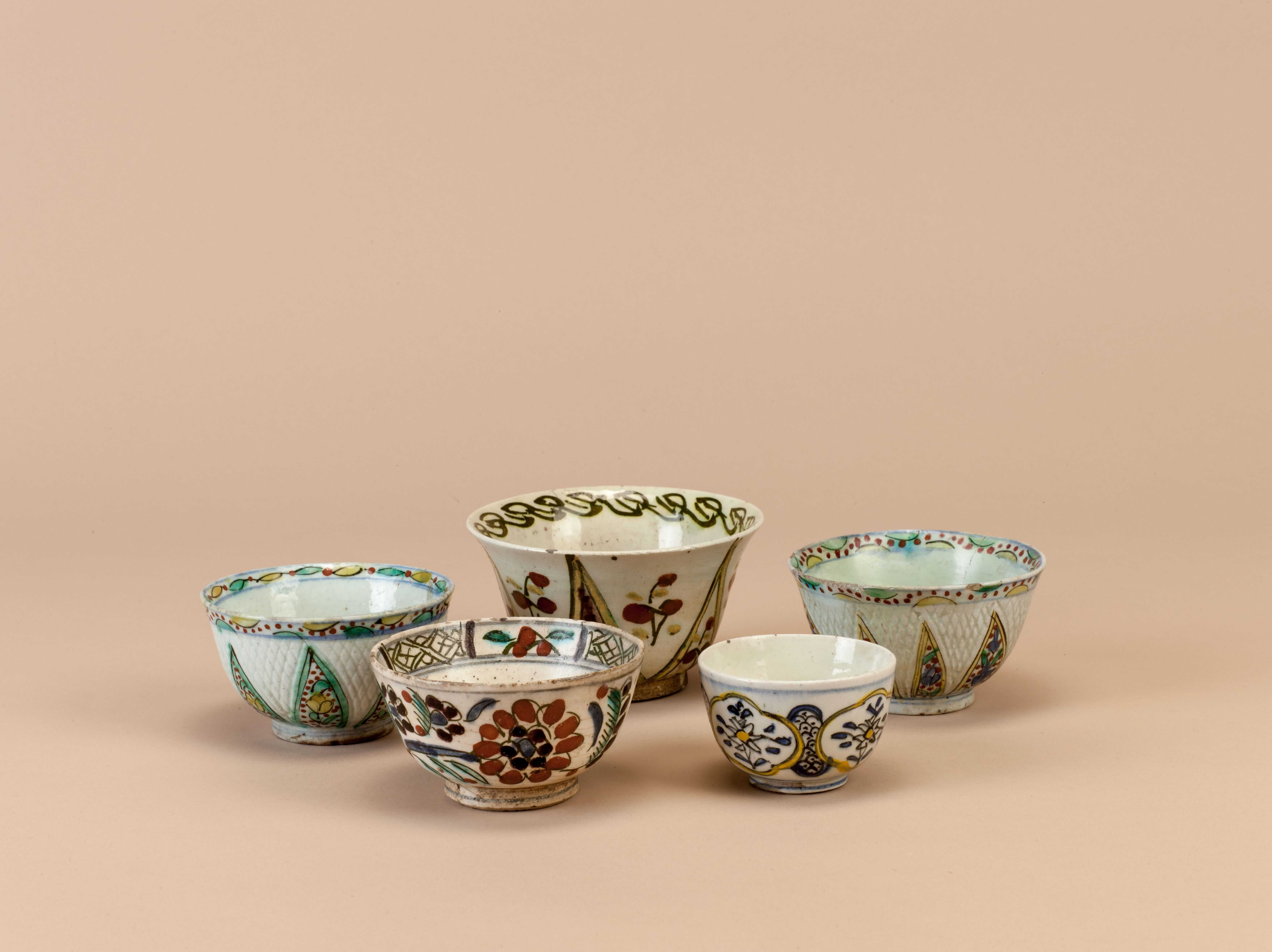30 September 2022
 Coffee was served with much splendor at the harems of the Ottoman palace and mansions. First, sweets (usually jam) was served on silverware, followed by coffee serving. The coffee jug would be placed in a sitil (brazier), which had three chains on its sides for carrying, had cinders in the middle, and was made of tombac, silver or brass. The sitil had a satin or silk cover embroidered with silver thread, tinsel, sequin or even pearls and diamonds.
Coffee was served with much splendor at the harems of the Ottoman palace and mansions. First, sweets (usually jam) was served on silverware, followed by coffee serving. The coffee jug would be placed in a sitil (brazier), which had three chains on its sides for carrying, had cinders in the middle, and was made of tombac, silver or brass. The sitil had a satin or silk cover embroidered with silver thread, tinsel, sequin or even pearls and diamonds.
The person carrying the tray with coffee cups and cup holders would hold the cover like an apron before her, while the second person carried the sitil set. The third would take a porcelain cup from the tray, fill it with coffee from the jug, place the cup in the cup holder made of gold, tombac, silver or porcelain, and holding it with her two fingers at its base, present it to one of the guests. Some would also smoke tobacco with long pipes or water pipes as they drank their coffee.
Housemaid, Jules Joseph Lefebvre, 1880, oil on canvas

 Brazier, coffee pot and coffee cup sleeve Coffee cups and a tray, 20th century
Brazier, coffee pot and coffee cup sleeve Coffee cups and a tray, 20th century
Suna and İnan Kıraç Foundation Kütahya Tiles and Ceramics Collection
Coffee was served with a small glass of water, and after the sweets were served one would drink the water and save the coffee for last. Aimed at enriching the taste experience, this was a ritual unique to serving Turkish coffee.

Coffee was a prestigious protocol drink at the palace, served by the chief coffee officer and his assistants. Starting with the 17th century, coffeehouses and coffee serving rituals are frequently depicted in the memoirs and engravings of foreign travelers.

In 1998 Ben Jakober and Yannick Vu collaborated on an obvious remake of Marcel Duchamp’s Roue de Bicyclette, his first “readymade” object. Duchamp combined a bicycle wheel, a fork and a stool to create a machine which served no purpose, subverting accepted norms of art.
Tuesday - Saturday 10:00 - 19:00
Friday 10:00 - 22:00
Sunday 12:00 - 18:00
The museum is closed on Mondays.
On Wednesdays, the students can
visit the museum free of admission.
Full ticket: 300 TL
Discounted: 150 TL
Groups: 200 TL (minimum 10 people)